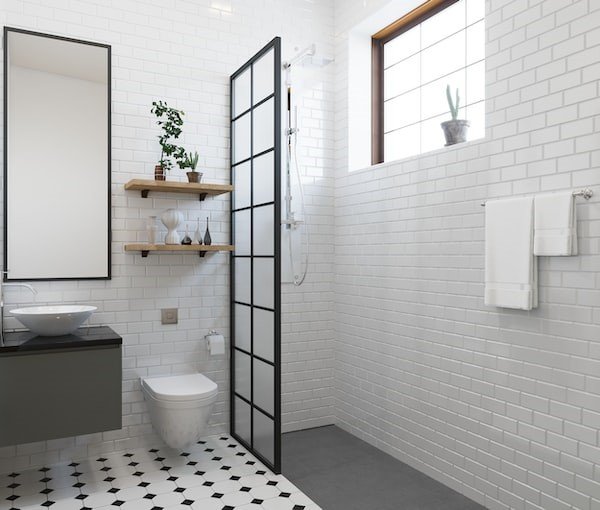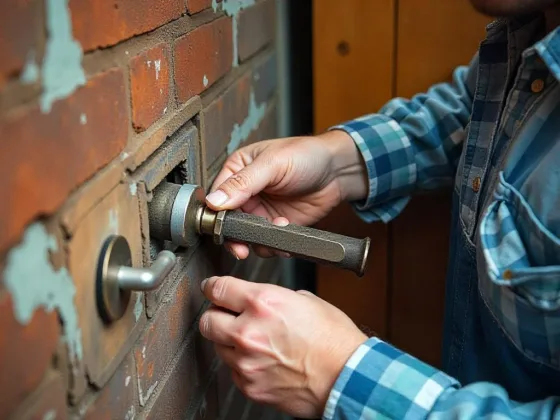Table of Contents Show
In a continent where almost half of the year has cold winters, like the United States, home heating can be a struggle for a lot of Americans.
How can you reduce that chill within your home and still keep your heating bill within your budget? The home heating solution might be installing a wall heater in your home.

Are you wondering what a wall heater is? Can a wall heater make your home cozy? How does it work?
Read on. In this article, we’re sharing everything you need to know about wall heaters.
The Benefits of a Wall Heater
A wall heater is a great way to heat a small space without taking up a lot of space. One of the benefits of a wall heater is that it is very efficient at evenly distributing heat throughout a room. They are mounted on the wall, which allows the heat to evenly circulate the room.
It can help you save money on your energy bill. It’s very easy to install and can be placed in a variety of locations.
Wall heaters are also very safe to use because they are out of the way and not a tripping hazard. It can be a great addition to any home because of the heat that it can provide in a cozy way.
Read Also:
Different Types of Wall Heaters and How They Work
Many types of wall heaters are available on the market for home heating systems. Wall heaters come in different sizes, shapes, and outputs, but they all work almost similarly.
The different types of home wall heaters are:
Convection Wall Heaters
A convection wall heater is the most common wall heater. The convection process involves the movement of air, which uses either natural convection or a fan to circulate hot air around the room.
The air is heated by a coil of electrically heated wire, called a heating element. The element is usually wrapped around a metal piece called a heat exchanger.
The fan blows air across the heat exchanger, and the air is heated as it passes through. The heat exchanger is usually located inside the heater, and the air is circulated through a duct or a plenum.
Convection wall heaters are a good choice for people who want to heat a smaller space, the rooms with low ceilings, or for your bathroom heater, as they can evenly heat the room without wasting energy.
Radiant Wall Heater
Radiant wall heaters are the most efficient. It works by emitting infrared radiation, which is absorbed by objects in the room, causing them to heat up. Radiant heat is a type of electromagnetic radiation that is invisible to the human eye.
This radiation is absorbed by objects in the room and converted into thermal energy, which raises the temperature of the object. This means that you can feel the heat almost instantly and that the heat is evenly distributed. This heater is ideal to use in bedrooms and living rooms.
Fan-forced Wall Heater
A fan-forced wall heater is similar to a convection wall heater. It is a type of home wall heater that uses a blower to force air past a heating element.
The blower also circulates the air in the room, which helps to distribute the heat evenly. This enables the heater to generate more heat than a conventional wall heater.
Many fan-forced heaters also have a built-in thermostat, which allows you to set the desired temperature, and the heater will cycle on and off as needed to maintain that temperature.
Oil-filled Wall Heater
Oil-filled wall heaters work by using oil as a heat transfer fluid. The oil is stored in a tank inside the heater, and when it is heated, the heat is circulated through the heater by a fan, and the heat is transferred to the surrounding air.
The oil is then returned to the heater to be reheated. This process is repeated until the desired temperature is reached.
This type of heater is perfect for those who want to heat a small space, such as a bedroom or office. They are also very safe to use, as the oil is not exposed to open flame.
All types of wall heaters are designed to heat a room quickly and efficiently. But for additional note, a wall heater can be used for electricity and the other one that uses natural gas or propane.
Wall heaters that use electricity are the most common type. It is less expensive to operate and easy to install but can be more costly to purchase.
The ones that use natural gas or propane are more expensive to operate and install but can be less costly to purchase.
How to Choose the Right Wall Heater
When choosing a wall heater, it’s important to consider the size of the room, the height of the ceilings, and the climate. The British thermal units (Btu) output is a measure of how much heat the heater can produce. The higher the Btu output, the more heat the heater can produce.
The efficiency of the wall heater can be measured by how much of the heat produced by the heater is used to heat the room. The higher the efficiency, the more heat the heater will produce for the room.
You’ll also want to decide if you want a unit that mounts on the wall or recessed into the wall. You need to measure how difficult it is to install the heater. The easier the installation, the more likely it is that the heater will be used correctly.
If you are not sure which wall heater is right for you, talk to a heating specialist. They can help you choose the right heater for your home and your needs.
How Much Wall Heaters Cost
The cost of a wall heater will depend on its size, features, and the type of fuel it uses. The average cost of a wall heater is between $300 and $500.
The cost of running a wall heater depends on the model and power consumption. For example, a 1,500-watt heater will cost about 18 cents per hour to operate, while a more energy-efficient 700-watt model will cost about 9 cents per hour.
How to Maintain Your Wall Heater
Since wall heaters are powered source by electricity and some by natural gas or propane, they can be a fire hazard if not properly maintained. To maintain your wall heater, you should regularly check the element for damage and replace it if necessary.
You should also vacuum or clean the area around the heater to remove any dust or debris. You should also check the fan regularly to make sure that it is running properly.
You should also make sure that the area around the heater is clear of any combustible materials or properly ventilated so that it cannot cause a fire. You have to make sure that it was properly installed because it can make your home very noisy.
It is also important to have the heater serviced by a professional every few years to ensure that it is operating safely and efficiently.
The Best Places to Install a Wall Heater
The best places to install a wall heater vary depending on the individual circumstances, especially on what location of the house you need the heating systems.
The best places are in the corners of the room, where they can evenly heat the space. Wall heaters should be placed at least two feet away from any furniture or other objects to avoid fire hazards. It is perfect near a window or in a doorway.
The Installation Process of a Wall Heater
For a guide, installation is relatively simple and can be done by a qualified technician in just a few hours.
The installation process of a wall heater begins with the mounting of the heater to the wall. You’ll need to find the studs in your wall using a stud finder. Once you’ve found the studs, mark them with a pencil, so you know where to drill the holes for the brackets.
Once the heater is mounted, a hole is cut into the wall to accommodate the exhaust vent. The vent is then connected to the heater and the entire unit is sealed up.
Once the installation is complete, the wall heater will need to be hooked up to an electricity source. After plugging it in, the heater will warm up the air around it and will circulate the warm air throughout the room.
Keep It Warm
The heating system in our home is one significant investment. It can be expensive, but it can efficiently help us. You just have to choose the right one for you.
A wall heater is a great way to keep your home warm during cold months. It works by circulating hot air around the room and can be controlled by a thermostat.
If you’re looking for a way to keep your home warm and save on heating costs, a wall heater is a great option for you.
Keep reading our blog daily for more informative articles like this.









